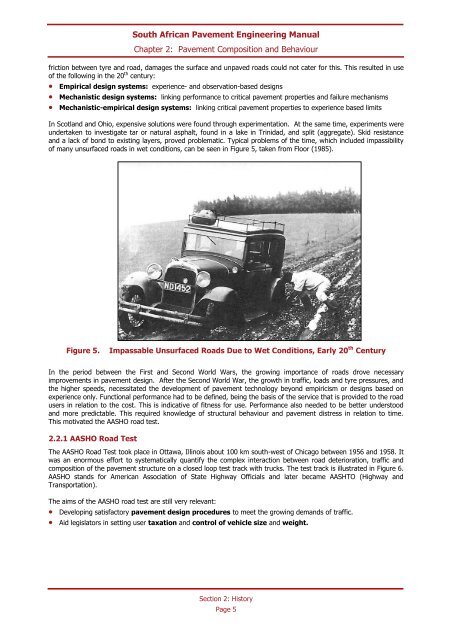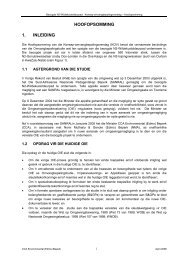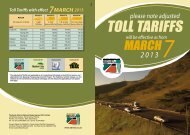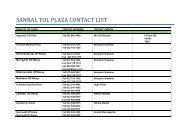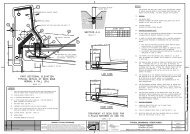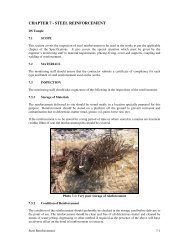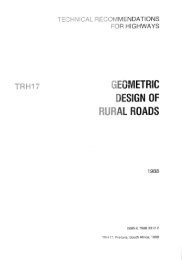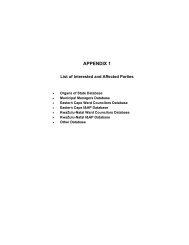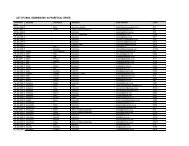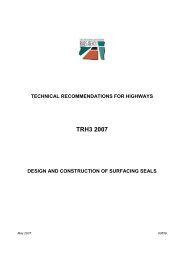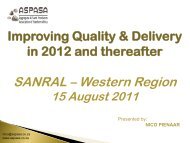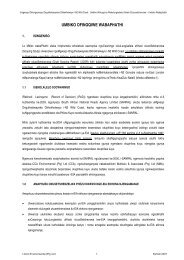SAPEM Chapter 2 - Sanral
SAPEM Chapter 2 - Sanral
SAPEM Chapter 2 - Sanral
Create successful ePaper yourself
Turn your PDF publications into a flip-book with our unique Google optimized e-Paper software.
South African Pavement Engineering Manual<br />
<strong>Chapter</strong> 2: Pavement Composition and Behaviour<br />
friction between tyre and road, damages the surface and unpaved roads could not cater for this. This resulted in use<br />
of the following in the 20 th century:<br />
Empirical design systems: experience- and observation-based designs<br />
Mechanistic design systems: linking performance to critical pavement properties and failure mechanisms<br />
Mechanistic-empirical design systems: linking critical pavement properties to experience based limits<br />
In Scotland and Ohio, expensive solutions were found through experimentation. At the same time, experiments were<br />
undertaken to investigate tar or natural asphalt, found in a lake in Trinidad, and split (aggregate). Skid resistance<br />
and a lack of bond to existing layers, proved problematic. Typical problems of the time, which included impassibility<br />
of many unsurfaced roads in wet conditions, can be seen in Figure 5, taken from Floor (1985).<br />
Figure 5.<br />
Impassable Unsurfaced Roads Due to Wet Conditions, Early 20 th Century<br />
In the period between the First and Second World Wars, the growing importance of roads drove necessary<br />
improvements in pavement design. After the Second World War, the growth in traffic, loads and tyre pressures, and<br />
the higher speeds, necessitated the development of pavement technology beyond empiricism or designs based on<br />
experience only. Functional performance had to be defined, being the basis of the service that is provided to the road<br />
users in relation to the cost. This is indicative of fitness for use. Performance also needed to be better understood<br />
and more predictable. This required knowledge of structural behaviour and pavement distress in relation to time.<br />
This motivated the AASHO road test.<br />
2.2.1 AASHO Road Test<br />
The AASHO Road Test took place in Ottawa, Illinois about 100 km south-west of Chicago between 1956 and 1958. It<br />
was an enormous effort to systematically quantify the complex interaction between road deterioration, traffic and<br />
composition of the pavement structure on a closed loop test track with trucks. The test track is illustrated in Figure 6.<br />
AASHO stands for American Association of State Highway Officials and later became AASHTO (Highway and<br />
Transportation).<br />
The aims of the AASHO road test are still very relevant:<br />
Developing satisfactory pavement design procedures to meet the growing demands of traffic.<br />
Aid legislators in setting user taxation and control of vehicle size and weight.<br />
Section 2: History<br />
Page 5


